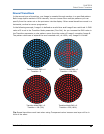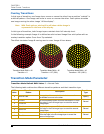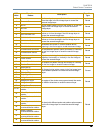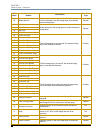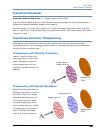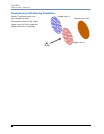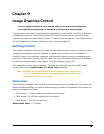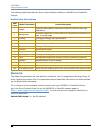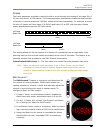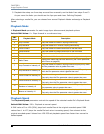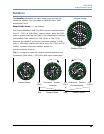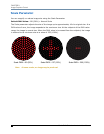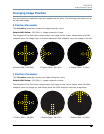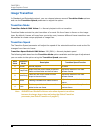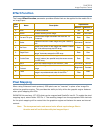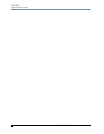
CHAPTER 9
Image Graphics Control
StudioPix™ Pixelation Luminaire User Manual 59
Frame
The frame parameter provides a method to dial or scrub through the frames of an image file. A
file can have from 1 to 256 frames. The frame parameter automatically scales the total number
of frames in a movie across the 256 DMX values of the frame parameter. For example, a media
file with 12 frames will have frame 1 at DMX 0 and frame 12 at 255, with the other frames
evenly distributed across the 256 DMX values.
This scaling allows for full live control of all frames of a media file from a single fader, thus
ensuring that the first and last frames are always at the limits of the fader. This feature is an
essential element that provides for the DMX Scratch functionality.
Frame Default DMX Value: 0 = The first frame of a media file is the playback start point.
Note: When the playback mode parameter is set to Static Frame, use the frame
parameter to select a frame to display. Several stock content files such as
lenses or alphanumerics can be used in this manner to display a single image
from a file.
DMX Scratch™
The DMX Scratch™ feature is a dynamic tool that allows for
live control of content playback. DMX Scratch allows the
lighting operator to “scratch” a fader and manually adjust the
content to synchronize with music or spoken words. To
configure a fader for DMX scratch:
1. Create a “setup” cue that selects content, enables the
static frame play mode, and selects frame 1 of the file.
2. File #11 in Folder #11 is titled “Lips-Scratch” and allows
for a “talking lips” effect for DMX Scratch.
3. In a different cuelist, create a “scratching” fader by record-
ing a cue that contains a value of 255 for the media frame.
4. Assign the fader for this cuelist to crossfade the values
stored within the cue (“crossfade IPCB” on Wholehog
consoles).
0 128 255
(100%)(50%)
128
(50%) (100%)
2550
40-Frame
Media File
12-Frame
Media File



